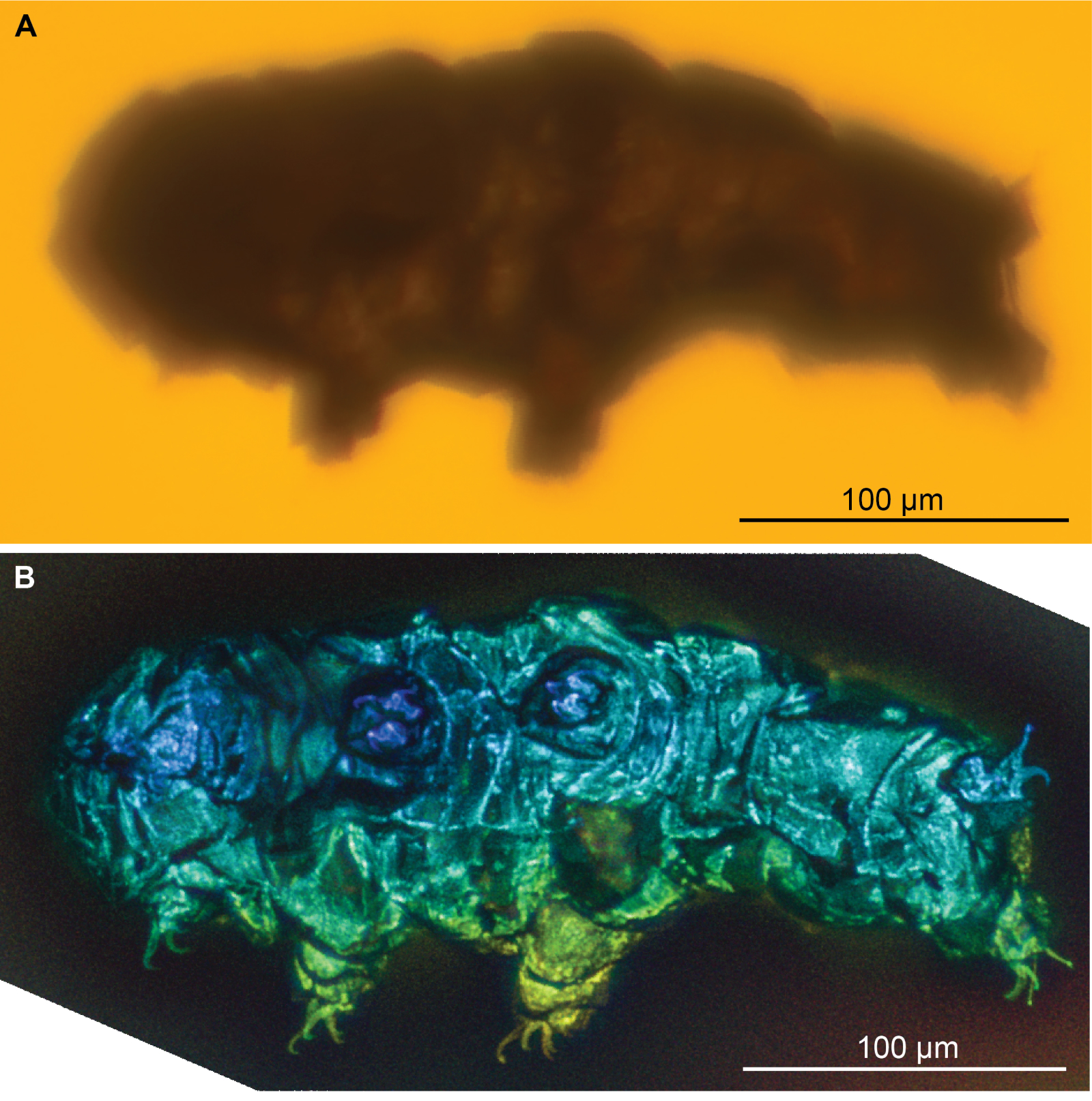1st tardigrade fossils ever discovered hint at how they survived Earth's biggest mass extinction
Detailed 3D images of the first tardigrade fossils ever discovered help scientists predict when tardigrades evolved their near-indestructibility — a trait that might have helped them survive multiple mass extinctions.

Tardigrades are well-known for being nearly indestructible. Now, scientists have reanalyzed ancient, amber-encased fossils, revealing when the super-tough critters may have first got the ability to enter a "tun state," which helps them survive in extreme environments.
The new findings could also explain how tardigrades survived major extinction events, including the "Great Dying," which wiped out around 90% of the planet's species around 250 million years ago.
Tardigrades, also known as water bears, are tiny eight-legged animals found in almost all habitats on Earth — from the deep sea's hottest hydrothermal vents to the freezing peaks of mountains. They can survive the harshest environments by entering a state of extreme inactivity, known as cryptobiosis, which enables them to almost completely halt their metabolism and endure dehydration, drastic temperature changes and even the vacuum of space.
In a new study, published Aug. 6 in the journal Communications Biology, researchers reanalyzed the first tardigrade fossils ever discovered — a pair of extinct water bears frozen within amber that are estimated to be around 72 million to 83 million years old.
The researchers created super high-resolution images of the fossils, which enabled them to classify the extinct species and retrace tardigrades' evolutionary history.
"Knowing when specific tardigrades originated, such as those that have the cryptobiotic ability, can help contextualize why and how these tardigrades and their ability evolved," study lead author Marc Mapalo, a researcher at Harvard University, told Live Science in an email.
Related: 8 Reasons Why We Love Tardigrades
Get the world’s most fascinating discoveries delivered straight to your inbox.
Scientists have discovered only four tardigrade fossils. The first two, which were used in the study, were found in the 1940s on a beach near Canada's Saskatchewan River encased in a chunk of amber.

Only one of the entombed species, Beorn leggi, was ever named. "The other one was not described properly because it was too small for the author to really see anything," Mapalo said.
The researchers behind the new study used confocal fluorescence microscopy to create 3D images of the tiny fossils. This technique only illuminates specific parts of a sample, which increases the ability to see fine detail and makes the specimens look much sharper in the final photos, Mapalo explained.
After observing the shape and placement of the unidentified fossils' claws, scientists placed the tardigrade in a new genus and species, which they named Aerobius dactylus.

It turns out that not all tardigrades enter a tun state — there are two major classes of tardigrades, and in one of these classes, only one family enters cryptobiosis. By analyzing fossil features, such as the tardigrades' claws, and placing the newly-described species on an evolutionary tree, they were able to roughly estimate how long ago the split between the two major tardigrade classes occurred. That, in turn, gave them a ballpark estimate for when cryptobiosis evolved in different types of tardigrades.

"By knowing how these fossils are related to living tardigrades, we can use them to calibrate the tardigrade tree — that is to estimate when different tardigrade groups originated," Mapalo said.
The two major classes of tardigrades diverged around 500 million years ago, during the Cambrian (541 million to 485 million years ago), plus or minus around 110 million years, the study found.
These two classes of tardigrades later diverged. Cryptobiosis, they concluded, likely emerged two different times in the two types of tardigrades somewhere between 430 million and 175 million years ago. They noted that the wide time intervals encompassed mass extinctions.
The authors suggest that this death-like survival state could have helped tardigrades survive several major extinction events dating back to the Permian extinction, or Great Dying, around 252 million years ago, when massive volcanic explosions triggered uninhabitable changes in the Earth's climate. Being able to stay in a state of suspended animation for years may have helped the creatures stay alive until environmental conditions improved. However, that doesn't necessarily mean tardigrades evolved cryptobiosis in order to survive these mass extinction events.
"I think that cryptobiosis helped tardigrades to survive these events, but I would not say for sure that it's the main reason for their survival," Mapalo said.

Elise studied marine biology at the University of Portsmouth in the U.K. She has worked as a freelance journalist focusing on the aquatic realm.
- James PriceProduction Editor
- Harry BakerSenior Staff Writer
- Hannah OsborneEditor
- Tia GhoseEditor-in-Chief (Premium)


